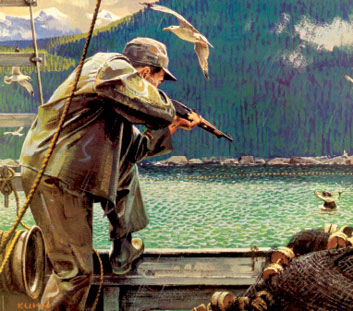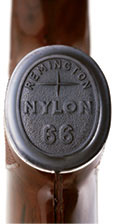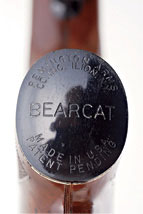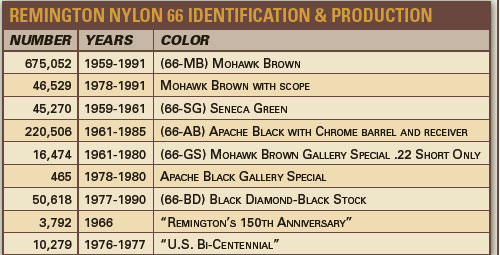I got this from "Angry Staff Officer", he likes to normally use "Star Wars " to make a point and he switched up to "Dune", and I have read the book and actually really liked the 1980's version of the movie and it had a killer soundtrack. I have been very busy at work and haven't had time for blogging, by the time I get home, I am whipped and all I want to do is go to bed after I eat supper. We have another week of all out overtime before the new shifts shut off the spigot, so I am going after it while I can. I got these pics off "DuckDuckGo"

Science Fiction had its share of questionable Military Commanders and Strategist Star Wars’
Emperor Palpatine, and his love of doubling or even tripling down on the whole
“floating orb of death” strategy, of course. Darth Vader’s fixation on
his wayward son to the exclusion of pretty much anything else springs to
mind. And then there’s Thanos’ single-minded obsession with halving the
world’s population while sounding like a whiny philosophy grad student.
But no commander in all of sci-fi warfare has ever been a better
tactician and worse military strategist than Baron Vladimir Harkonnen in
Dune. Overly confident, manipulative, ruthless—based on his
introduction in Frank Herbert’s classic 1965 novel, he’s the ideal bad
dude. By the middle of the book he’s even managed to claim control of
the desert planet Arrakis, displacing—and [spoilers, but in my defense
you’ve had like 60 years] killing—his arch-rival Duke Leto Atreides and
claiming the only means of production for the most valuable natural
resource in the galaxy: melange, aka “the spice.” Helluva start. But
although he’s a master of intrigue, the Baron can’t master grand
strategy to save his ample posterior, and as for understanding the human
terrain – well, there’s less chance of that than a Bene Gesserit school
not meddling in gene pools.

Before he completely tanks his hold of Arrakis, the Baron is a damn
good tactician and tolerably good at the operational art. He unleashes a
decisive attack—moving troops through time and space—on multiple
targets, and uses audacity and surprise to overwhelm House Atreides. He
even manages to con the Padishah Emperor Shaddam IV into sending some of
his elite Sardaukar soldiery to help with the fighting in return for
some sweet spice kickbacks and an assurance that this would be the last
of the Great House infighting. He’s playing the kind of 3-D chess that
ought to grant him a “go” at every warfighter exercise for the
foreseeable future. Still, he still ends up losing everything. How?
Well, like many would-be-dictators, he throws away his hard-earned
conquest through a series of bone-headed post-conflict decisions driven
by avarice and a short-sighted reliance on his own genius.
The Baron’s Grand Strategy
This massive bungling of a perfect invasion largely stems from how
Baron sees the world. For him, it’s just House Harkonnen and … everyone
else. His overall goal is to ensure that the Harkonnens have a path to
the emperor’s throne—and for that, he has to think big. Really big. Not
just boring boots-on-the-ground strategy, but grand strategy:
long-range, multigenerational planning that considers all the
instruments of national power, from military to economic to social to
political to diplomatic. But as a grand strategist, the Baron leaves a
lot to be desired. He goes all-in for the initial push to seize Arrakis
and then completely falls apart in the post-conflict planning.
Baron Harkonnen and his nephew,
“Beast” Rabban, being told to "Squeeze" Arrakis
Rather than put together a scheme that accounts for all peoples on
Arrakis, he adopts one that leaves the host-nation inhabitants, the
Fremen, without agency. He emplaces a puppet governor—his nephew,
“Beast” Rabban—to hunt and kill them while wringing every cent possible
out of the planet. This serves a two-fold purpose: pay for his losses
from the war with the Atreides and make the people of Arrakis hate
Rabban. He then plans to replace Rabban with his other nephew,
Feyd-Rautha, who will come on the scene as a savior figure. In the
Baron’s thick-headed mind, he will now have the loyalty of his people as
well as plenty of money. Win-win. Much like every would-be conqueror,
this plan backfires in the most predictable of ways.
The Baron and Fayd Rautha
Look, you can’t just waltz in and start tyrannizing people without
expecting some backlash. Napoleon learned this the hard way when he
kicked his way into Spain and Portugal, only to be confronted with a
growing force of irregulars who tied down his much larger conventional
armies. “It was that miserable Spanish affair that killed me,” he stated
after he’d lost. Similarly, if you impose harsh economic penalties on a
colony to pay for a war, you can expect that people might get a little
fed up and ask why they need you around at all. Want proof? Look at
George III. When the king and the English Parliament went looking for
cash to fund the (very expensive) Seven Years War (1754-1763), they
turned to the 13 North American colonies to throw in their fair share.
Not a totally unreasonable request considering the war benefited the
colonies most. But then, a decade later, the locals were growing
increasingly restless and had some new and interesting ideas about
freedom.
So, yeah, the Baron tripped right into the age-old trap of
nation-building in order to gain a monopoly over a commodity that he
didn’t fully control or understand. Ya love to see it.
The Spice
The Guild Navigator visits Emperor Padishah Emperor Shaddam IV to ask why he is helping House Harkonnen.
In Frank Herbert’s world, melange is the most valuable commodity in
the known universe. It grants the user extended psychic abilities,
longer life, and heightened awareness—while also being incredibly
addictive to the point of death if there is a withdrawal. A wicked
bummer, that. But because of its attributes, pilots can use it to
traverse space and time, “folding space” to bring massive starships from
planet to planet safely. The Guild Navigators—completely addicted to
spice—become the entire gateway to space travel.
One might ask, Why wouldn’t they just use machines or artificial intelligence to work out the computations necessary for space travel? It worked in Star Wars and Star Trek, after all. But for Herbert’s world, think about machines more along the lines of The Matrix.
In Herbert’s universe, humans ultimately had to rise up against the
technology they created and destroy it in a bloody, multigenerational
battle known as the Great Revolt, or “Butlerian Jihad.” Out of that came
a great dictum: “Man may not be replaced.” In order not to violate this
dictum, melange-based space travel becomes the norm. With it, the
ever-pervasive spice – and the addiction that can kill you, of course.

And because spice comes from only one place—Arrakis—it becomes the focal point for the balance of power in Dune.
This single point of control means that whoever controls the source,
controls the universe. Furthermore, if you are a desert-dwelling
Atreides-in-exile, as well as pseudo-religious-prophet insurgent bent on
restoring the family name, when you realize that spice production can
be destroyed at its source, you realize, as Duke Leto’s son Paul
Atreides does, that you have an incredible amount of leverage: “The
power to destroy a thing is the absolute control over it.” It’s
disconcerting how rapidly an adolescent figures this out while the Baron
is still spending most of his time trying not to get assassinated.
Spice becomes the key driver of conflict in Dune. Although
there are the other usual motivations—feuds, jealousy, political
ambitions, religious fanaticism, a weird focus on bloodlines, and giant
worms—the spice is the catalyst that sets conflict in motion. It is that
historical flash point, that key terrain, that every conflict is
centered on. Without it, a nation-state is doomed to obscurity. Yet
somehow, the Baron just doesn’t understand quite what that means.
War in Dune
Now, maybe we’re being a little unfair to the Baron; after all, he’s
been pretty handicapped by his creator in his ability to make war.
Written in the 1960s, Dune is the product of an era steeped in
disruptive and violent change. In the span of that decade, US post-WWII
atomic supremacy had been up-ended by the revelation that the Soviet
Union also had nuclear weapons. In 1957, the Soviet Union changed the
game yet again, with the launch of Sputnik, the first rocket to
put an artificial satellite into orbit around Earth. This sets off the
arms race, where the US and Soviet Union compete to develop the first
intercontinental ballistic missiles that can strike each others’ home
countries, ushering in the era of mutually assured destruction, or
MAD. Fun, right?
In Dune, MAD is used as a plot point to enforce the ban on
the use of atomic weapons. Simply put, if one family house uses atomics
against other humans, the rest of the Great Houses will destroy that
belligerent in entirety. Rather than MAD, it becomes AD—assured
destruction. This places MAD within the greater context of the
historical mutually-supportive treaties that sprang up during the Cold
War, such as NATO and the Warsaw Pact, with the added twist that
offenders would see annihilation brought upon them.
In removing atomics as a viable military option, Herbert forces his
combatants to seek alternate ways of war. Massive conflicts between
large bodies of troops are generally too expensive since the Spacing
Guild can control politics at large by charging exorbitant sums for
moving troops from planet to planet. Therefore, low-intensity conflict
becomes the name of the game. Assassinations, raids, sabotage, and proxy
wars are the most common types. The threat of complete destruction
drives people to seek alternate ways of competing in great power
politics.
Basically, the mantra becomes, how can I do my competitor the most harm the most quietly and the most cheaply?
The Baron excels at the assassination and sabotage stuff, but pretty
much bankrupts himself in his military operation to seize Arrakis, hence
the need to replenish his treasury. But it’s a gamble that he’s willing
to take, since he cannot dominate the other Great Houses with force
alone. It’s too expensive. Therefore, he chooses political and economic
power as his means to the ultimate end. At the nexus of all this is the
control of the gatekeeper of power: the spice.
The Baron’s Blunder
The Baron’s aforementioned invasion of Arrakis was flawless. Tactically, he’d mastered the art of war in the Dune universe
up to that point. But if your overall goal is achieving sustainable
power with an eye to the emperor’s throne, your wartime aims cannot end
on the battlefield. This has been a hard concept for nations to grasp –
for pretty much ever. I mean, just look around.
The Baron’s grand strategy suffered a similar fate. Once he conquered
Arrakis, he focused too heavily on the spice—and still didn’t fully
understand its value. His wily designs on the throne saw melange as a
means to an end: it was expensive, he controlled it, so he could raise
money to buy influence. He completely failed to factor in the population
of Arrakis itself. As he pointed out to Rabban, if he killed too many
people, he would have even more shipped in to take their place. This is
where the Baron revealed himself to be an utter simpleton, because he
ignored what Paul Atreides identified almost immediately.
Riding the Sandworm on Arrakis
As the Baron’s rival, Paul quickly gathered the importance of a
disenfranchised local populace that was also incredibly skilled at
fighting in the local terrain. Like, you want assured mobility? How
about crazy religious fanatics riding massive sandworms through severely
restricted terrain for assured mobility? Through his influence with the
desert population of the Fremen, Paul also found out that the spice was
not just a commodity—it was part of an ecosystem, and could be
destroyed. Able to see past the mere monetary value of the spice, Paul
was able to diffuse its power and completely upend the power balance on
Arrakis, albeit with some bizarre drug-crazed religious warlord
overtones.
The Fremen (Local Indigenous People of Arrakis(Dune)
Baron Harkonnen’s reliance on using the spice for monetary gain as
well as ignoring the indigenous population led to a whole series of
massive oversights whereby he found himself suddenly facing a violent
and effective insurgency. By the time he grasped the magnitude of it, it
was too late. Much like the Baron in his attack on Arrakis, Paul made a
masterful tactical decision. He launched a surprise attack through a
storm, used atomics to breach a massive mountain wall, and then
assaulted through it with a legion of Fremen on sandworms. As one does.
Like a ‘thopter in a sandstorm, the Baron didn’t stand a chance.
Aalya(Paul's sister) is the one that actually kills the Baron with the Gom Jabbar/
Ultimately, you can win all the battles you want but still end up a
piece of space junk if you don’t have a plan for what happens after the
combat. World domination isn’t a single-sum game. Anyone who says
otherwise is just spice-drunk.





































